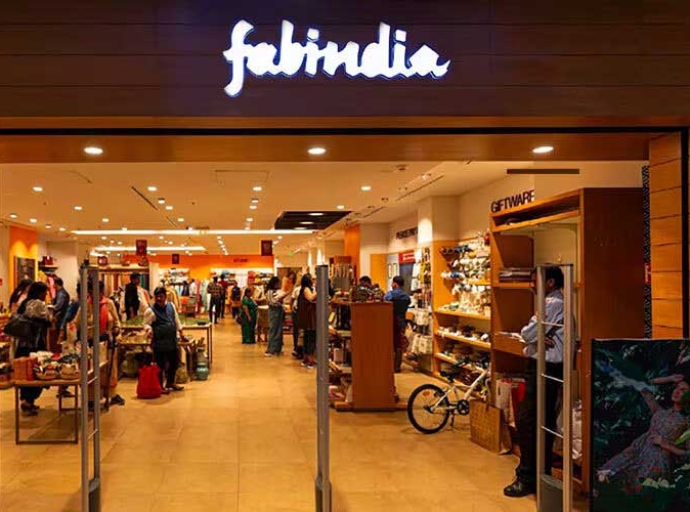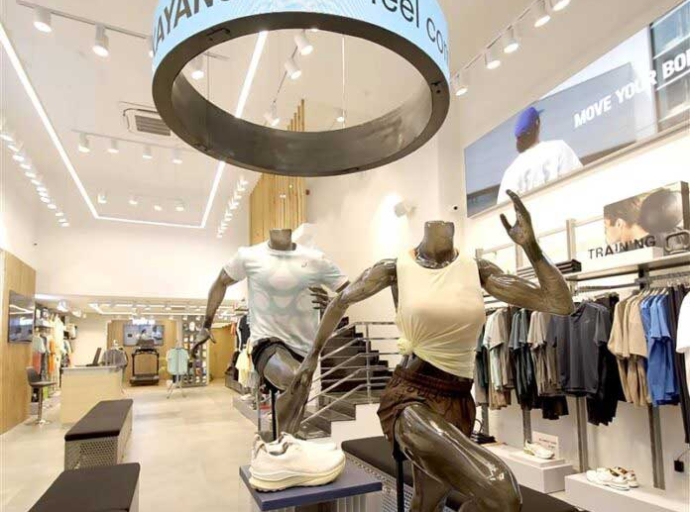21 November 2022, Mumbai:
According to the Economic Survey for 2021-22, the textile sector has received close to Rs. 203,000 crore in investment over the previous decade, employing nearly 105 million people, directly and indirectly, the majority of whom are women.
100% FDI is allowed in the textile sector under the automatic route. Every crisis can be converted into an opportunity like that of Covid-19. Covid-19 is a big crisis and the ‘biggest of the century’ crisis was converted into an opportunity, wherein many of our boys and girls came up with innovative solutions to the problems, said Piyush Goyal, Union Minister of Commerce & Industry, Consumer Affairs, Food & Public Distribution, and Textiles, at the ET Startup awards in Bengaluru earlier this year.
The sector has the potential to contribute significantly to the Hon’ble Prime Minister’s vision to become a USD 5 trillion economy in the next few years owing to significant value addition across the textile value chain.
Textile industry-A lowdown
With a sizable raw materials base and textile manufacturing, India has one of the largest textile industries worldwide. Along with other essential industries, the manufacturing and trading of textiles play a significant role in our economy. The export of textiles and apparel accounts for about 27% of total foreign exchange earnings.
The textile and apparel industry (T&C) contributes about 14% of industrial production and 3% of the nation's GDP. The textile sector contributes about 8% of the total excise taxes collected. So much so that the textile industry is responsible for up to 21% of all employment created in the economy.
The manufacturing of textiles directly employs about 35 million people. Another 60 million people could be used indirectly, including the workforce involved in trade and handling related to producing agriculturally based raw materials like cotton.
Trade Data points; India exported $41 billion of textiles in the calendar year 2021, with a CAGR of 2.7, a little above the average for the world. The domestic textile industry depends heavily on imported wool of the apparel/clothing grade. Because of this, the domestic economy is dependent on imports. India imports raw fleece from several nations. Turkey, China, New Zealand, and Australia make up the top four import markets.
From April 2016 to March 2021, Japan, Mauritius, Italy, and Belgium will have contributed the most foreign direct investment (FDI) to India's textile industry.
Supportive policy interventions
Hon'ble Piyush Goyal, Union Minister of Textiles, Consumer Affairs, Food, and Public Distribution and Commerce & Industry in a very recent virtual meeting with EPCs (Export Promotion Councils) with divergent interests drawn from across (T&C) the textile & apparel sector, making a strong/solid pitch taking a comprehensive view urging the trade setting a definitive target to accomplish textiles exports of 100 billion USD in the following 5-6 years as we move ahead confidently in the Techade well contemplated by India's Hon'ble PM, Narender Modi.
Furthermore, pressing the need for a cohesive trade approach of engagement and indulging in sustained industry dialogues charting out a holistic approach ensuring the timely oversight mechanism looking into the aspect of track & traceability of cotton and better value-added cotton products a step in the direction of premiumization as it already becomes a commodity business.
Economic Survey 2022: PLI scheme for the textile industry to attract investments in the next 5 years.
The Modified Technology Upgrading Fund (ATUFS) scheme, introduced by the Indian government, is being implemented for the textile sector with a cost of $17,822 crore from 2016 to 2022 to attract $1 lakh crore in investment.
As per official estimates of the Ministry of Textiles (MoT)," India is in a sweat spot & we estimate India can reach $65 billion in exports by 2020 (implying a 9-10% compound annual growth rate) with the correct measures by industry majors and vigorous execution of government programs it has taken in its wisdom.
China plus one sourcing, creating a golden chance for Indian textiles to perform a turnaround and recover a leadership post as a top exporting economy according to the report.".
Win Some Lose Some
Indian textile industry for once is in the throes of disaster. Let us now dwell on the US-China cotton ban to solve this conundrum. Recognizing unequivocally that it has only compounded the problems of India's cotton yarn spinning industry on the back of Chinese tactical cheap offerings leading to unintended & far-reaching consequences in the past couple of months.
India is now China's rival even in terms of overall production. The threat of rising interest rates, labor costs, and worker pay is another significant one. Textile Industry Outlook; Imported inflation pressure remains the overarching risk. According to Upendra Prasad Singh, the textiles secretary, Indian textile makers are beginning to see a slowdown in demand due to rising energy and food costs that have reduced demand for goods like curtains and bedspreads in the US and Europe's key export markets. Inventory levels are pretty high at the time.
Uptick in Indian textile growth story
The value of India’s textile industry can increase to $250 billion in the next 5-7 years and help the country become a developed economy, said PiyushGoyal, Textile Minister at the Asian Textile Conference (ATEXCON) organized by the Confederation of Indian Textile Industry.
Consumer needs gradually increased due to the constant advancement of technology and application standards. And to meet that standard, producers must add something to their goods to increase their value of those goods. He urged the industry to introduce high-quality products and elementary products like zipping and embellishments that are currently being imported.
Piyush Goyal calls upon the Textile industry to focus on the back of deft handling and an approach of innovation and sustainability to drive growth and make the best out of newly stitched trade pacts/FTAs/CEPAs especially knowing that India has a depth of leadership, talent pool, and resources what it takes despite of all odds.
Fostering a Resilient Startup Ecosystem
Textiles companies and startups in India as per one of the trade sources released some time ago, put in context the unfolding increasing interest in this space and the testament to the confidence of investors
SilksBazaar
Uditya Tech Private Limited
The Yarn Bazaar
Bunkaar. ...
Textile Infomedia. ...
Force Multiplier Ecommerce Pvt Ltd
JSP Enviro private limited
Svante Group and counting
Since the launch of the Startup India introduction on 16 January 2015 the Indian startup ecosystem has grown to the 3rd largest in the world with over 60,000 startups across 633 districts from all 28 Slates and & 8 Union Territories with their own dedicated Startup Policies.
India's entrepreneurs responded to the pandemic by reimagining their businesses, and bouncing back in the face of adversity, embodying the true spirit of a self-reliant India.
Small fashion start-ups with a keen eye for design and sustainability are making their mark on the fashion industry in India and abroad and creating a name for Indian design using local artisans and fabrics.
Piyush Goyal is an Indian businessman; He also said that the present situation fits in so beautifully with the Make in India programme launched 8 years ago, - the Atmanirbhar Bharat initiative and Textile/Apparel fits well in the larger scheme of things as the true spirit here is a homegrown self-help model.
Goyal listed several illustrations where Startups could provide solutions to resolve problems.
The Indian start-up ecosystem has the ability to transform the country into a center for creativity and invention and considering that India today is one of the best facilitators of harnessing & firing the entrepreneurial visionary spirit.
BOTTOMLINE
As per one ET report reflecting a very interesting observation and validating the claim of the Textile sector as a frontrunner in generating employment in the world’s second most populated/would be most populous shortly,” 70 jobs for every crore rupee invested”.
The point of discussion here is how bright and lucrative is the career prospects for budding bright minds looking at exploring the prospects of career path, future job employability, and hiring scenario in this space as we write Or how about starting a textile business wearing an entrepreneurial cap; It will be quite thoughtful of you as certainly one should know the actual reasons/rationale behind it.
Predominately an enormous source of job creation, and the outcome of Covid-19, everything collectively is helping India’s textile growth trajectory as a shot in the arm.
According to one KPMG report," Moreover, the industry and the Government could come together for attracting investments and creating support infrastructure for emerging sectors like Textile, other job-creating sectors. You can rest assured of your positive business outcome venturing into the global market, as nobody can be decoupled in this connected world today and the resilient domestic Indian economy/to ease the pressure only cushions any business; the Indian growth story is a proxy for itself not for the global economy which is the best part of Indian economy presently and same can be safely assumed for Indian Textile Industry.
Moreover, just to drive a point home the Indian textile industry is also the best place for both manufacturers and retailers to start investing and stay invested short-midterm basis.
The article makes a case for it being a lucrative market to enter, and pretty assuringly as many people have already invested given the caveat of the aforementioned thesis arguably building as a prognosis for a sound business case.
We have to mention here that as a confidence-building "Textiles and Apparel (T&C) sector" is also considered one of the fastest-moving industries, and the demand for the same is always high given that it is construed to be a cornerstone of basic living ROTI, KAPDA aur MAKAAN crowding in the investments given India is an outlier if one were to look from the lens of IMF based on the key economic indicators.
Latest Publications


































